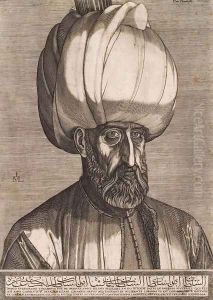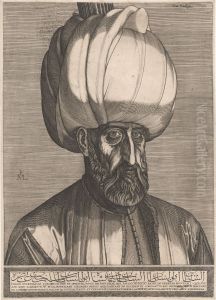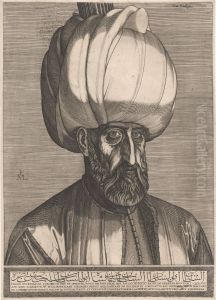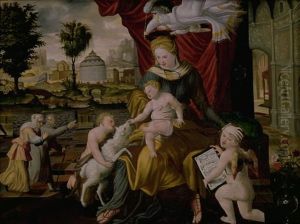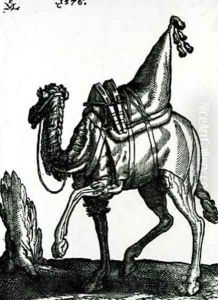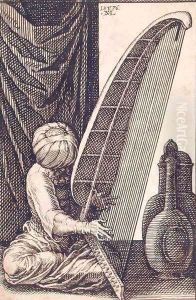Melchior Lorck Paintings
Melchior Lorck, also spelled Lorichs or Lorch, was a notable Danish-German artist and printmaker known for his detailed engravings and woodcuts, as well as his travels and works inspired by the cultures and architecture of the Ottoman Empire. Born in Flensburg, then part of the Danish realm, around 1526-27, Lorck came from a family with a military background. His early life is not well documented, but it is believed that he received his artistic training in the German regions, possibly in Lübeck.
Lorck's life became particularly noteworthy when he joined the retinue of the Holy Roman Emperor's ambassador, Ogier Ghiselin de Busbecq, on a diplomatic mission to the Ottoman Empire, which lasted from 1555 to 1559. During his time in Constantinople (modern-day Istanbul), Lorck meticulously documented the life, customs, and architecture he encountered, creating a large body of work that included drawings and engravings. His collection, known as the 'Turkish Publication', would not be published during his lifetime but is considered an invaluable historical source today for its ethnographic and topographic details.
Upon his return to Europe, Lorck worked in various cities, including Vienna, where he was involved in several significant projects. He was employed by the Austrian Habsburgs and produced a range of works, including portraits, architectural drawings, and prints. Lorck's travels also took him to Antwerp, which was a center for printmaking at the time, and it is likely that he was influenced by the work of other artists there.
Despite his remarkable talent and the unique nature of his works, Lorck did not achieve significant fame during his lifetime, and many details of his life, including the exact date of his death, remain obscure. He is believed to have died sometime after 1583, but records of his later life are scarce. What remains undisputed is that Melchior Lorck was a pioneering figure in the field of travel illustration and his works offer a rare and detailed glimpse into the 16th-century Ottoman world, as well as the cultural exchanges between Europe and the Near East during this period.
